|
|
|
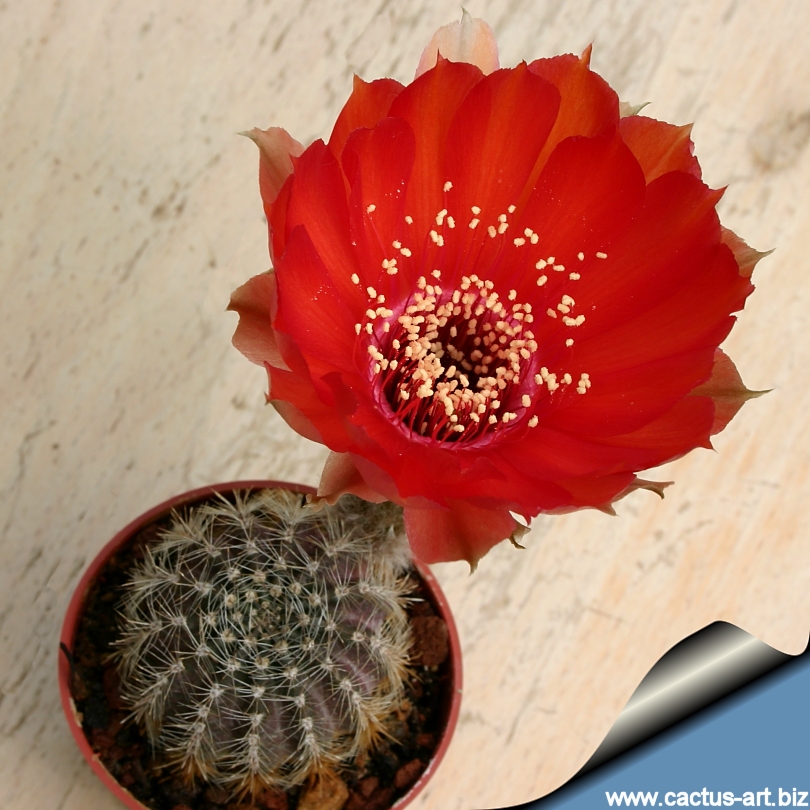
Lobivia amblayensis var. albispina.
The flower is dark red.
A
real eye catcher!
|
Description:
Tuberous dwarf species, Compact, small, clustering cactus.
Stem: Black-green with woolly areoles.
Spines: Short, glassy, mostly cream white in variable number.
Flowers: approx. 5.5 cm. long, 4.5 cm in diameter
Blooming season (Europe): Flowers are produced in spring, and remain open
for about three or four days.
Root: tap root. |
|
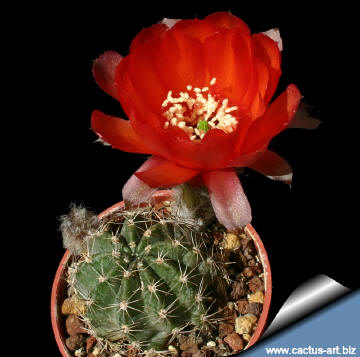 |
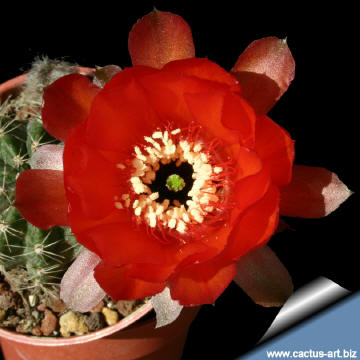
|
Cultivation: It
is a summer-growing species
that offers no cultivation difficulty.
Water regularly in
summer (but do not over-water).
It needs good drainage and very porous
soil. Keep rather dry in winter.
Feed with a high potassium
fertilizer in summer.
It is quite frost resistant if kept dry (hardy to -5° C).
Outside full sun or afternoon shade, inside
it needs bright light, and some
direct sun.
Propagation: Direct sow after last frost.
(seldom produces offsets) |
|
Photo of plants belonging to the Lobivia
(Echinopsis) haematantha
complex
(This taxon has lots of synonyms (like most Lobivia) whit several
controversial varieties and subspecies):

 |
|
Advertising
|
|
|
|
|
Family:
Cactaceae (Cactus
Family) |
|
Scientific name: Lobivia
amblayensis var.
albispina Rausch 1972
Origin: Amblayo, Salta, Argentina 2200-3600m
Conservation status: Listed in
CITES appendix 2.
|
Synonyms:
-
Echinocactus
haematanthus Speg. 1905
-
Lobivia haematantha
(Speg.) Britton & Rose 1922
|
|
|
|
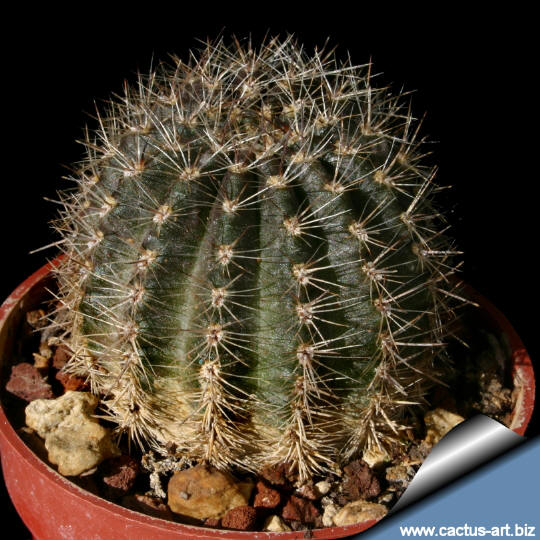
The body is black-green with woolly areoles. the spines are glassy
and mostly creamy-white in colour.
|
|
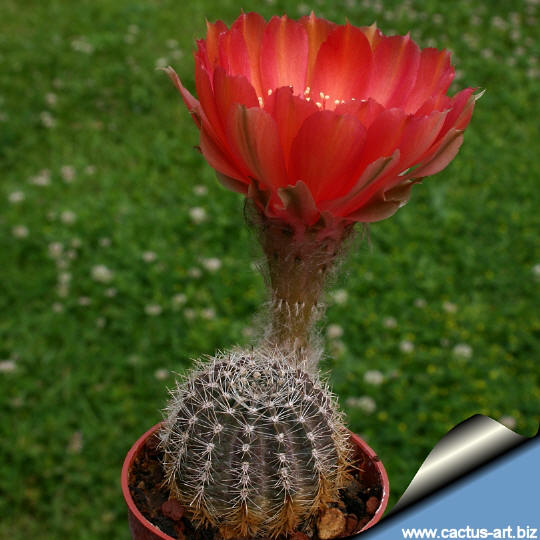
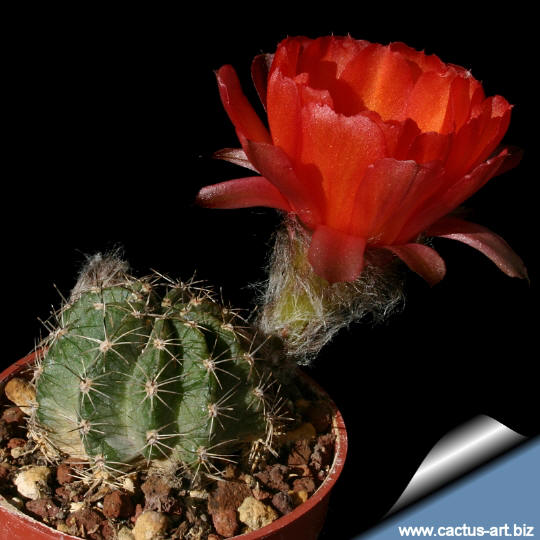
|
|